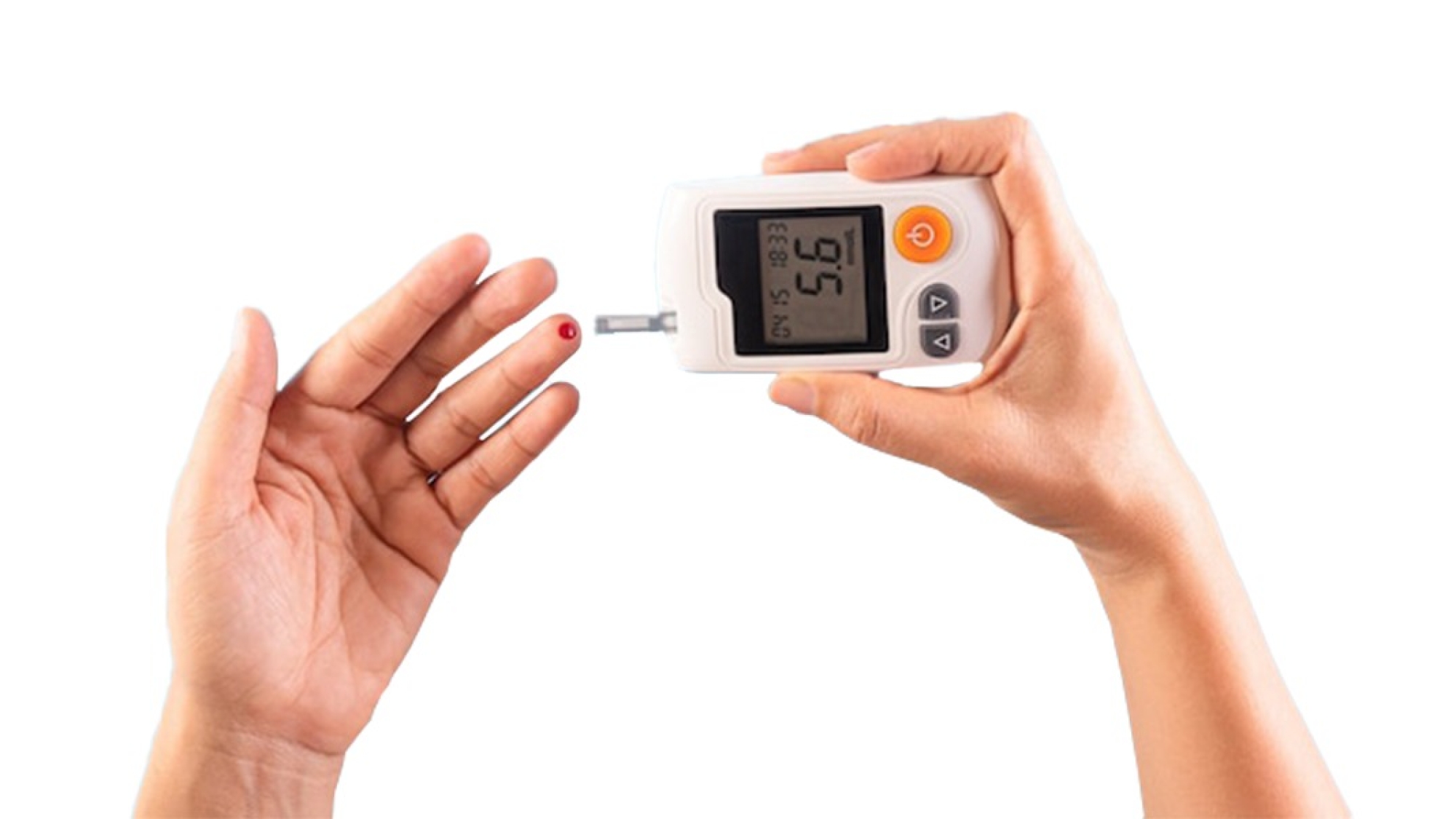What is Blood Glucose?
Blood glucose, also known as blood sugar, is the amount of glucose (a type of sugar) present in the blood. Glucose is an important source of energy for the body’s cells and is transported through the bloodstream to provide energy to the body’s tissues and organs.
The body regulates blood glucose levels through the actions of insulin, a hormone produced by the pancreas, and glucagon, another hormone produced by the pancreas. Insulin helps to lower blood glucose levels by promoting the uptake of glucose by cells and the conversion of glucose to glycogen (a form of stored glucose) in the liver. Glucagon, on the other hand, raises blood glucose levels by promoting the breakdown of glycogen in the liver and the conversion of stored fats to glucose.
Normal blood glucose levels in a healthy individual are typically between 70-100 mg/dL (milligrams per deciliter) after fasting, and up to 140 mg/dL after eating. However, a person with diabetes may have higher or lower blood glucose levels. High blood glucose levels (hyperglycemia) can occur in people with diabetes, prediabetes, and in some cases, in people without diabetes, and can cause symptoms such as increased thirst, fatigue and increased urination. Low blood glucose levels (hypoglycemia) can occur in people with diabetes who take insulin or certain diabetes medications, and can cause symptoms such as shakiness, sweating, and confusion.
It’s important to note that blood glucose levels can be affected by many factors such as diet, exercise, stress, medications and illnesses, so monitoring and controlling blood glucose levels is an important part of managing diabetes, prediabetes, and other conditions that affect glucose metabolism.
Types of Blood Glucose:
There are two main types of blood glucose, fasting blood glucose and postprandial (after meal) blood glucose.
Fasting blood glucose: This is the blood glucose level after an overnight fast of at least 8 hours. It is usually measured in the morning before breakfast. Normal fasting blood glucose levels range from 70 to 100 mg/dL (3.9 to 5.6 mmol/L).
Postprandial blood glucose: This is the blood glucose level after a meal. It is usually measured 1-2 hours after the start of the meal. Normal postprandial blood glucose levels should be below 140 mg/dL (7.8 mmol/L).
Both fasting and postprandial blood glucose levels are important in the diagnosis and management of diabetes. In addition to these two types, there is also a test called the hemoglobin A1c (HbA1c) test, which measures the average blood glucose level over the past 2-3 months. The HbA1c test is used to monitor long-term blood glucose control in people with diabetes.
Why Monitor Blood Glucose?
Monitoring blood glucose is important for people with diabetes because it helps them understand how their blood glucose levels are responding to treatment and lifestyle changes.
Here are some reasons why monitoring blood glucose is important:
To manage diabetes: Blood glucose monitoring is a key tool in managing diabetes. People with diabetes use blood glucose meters to measure their blood glucose levels and adjust their treatment plan accordingly. By monitoring blood glucose levels, people with diabetes can better manage their disease and prevent complications.
To prevent hypoglycemia: Hypoglycemia, or low blood glucose, is a common side effect of diabetes treatment. Monitoring blood glucose levels can help people with diabetes prevent hypoglycemia by identifying when their blood glucose levels are getting too low.
To prevent hyperglycemia: Hyperglycemia, or high blood glucose, is also a common side effect of diabetes treatment. Monitoring blood glucose levels can help people with diabetes prevent hyperglycemia by identifying when their blood glucose levels are getting too high.
To adjust treatment: Blood glucose monitoring can help people with diabetes adjust their treatment plan based on their blood glucose levels. For example, if a person’s blood glucose levels are consistently high, their healthcare provider may adjust their medication dosage or recommend lifestyle changes to bring their blood glucose levels down.
To prevent complications: Monitoring blood glucose levels can help people with diabetes prevent complications, such as nerve damage, kidney damage, and eye damage, which can occur when blood glucose levels are consistently high over time.
In summary, monitoring blood glucose levels is important for people with diabetes to manage their disease, prevent hypoglycemia and hyperglycemia, adjust treatment, and prevent complications.
Tracking Blood Glucose Readings with Medugo:
Medugo is a mobile application that can be used to track blood glucose readings for people with diabetes. Here’s how to use Medugo to track your blood glucose readings:
Download the Medugo app on your smartphone or tablet.
Open the app and create an account by providing your email address and creating a password.
Enter your personal information, such as your name, date of birth, etc.
You can manually enter your readings into the app.
Take a blood glucose reading using your meter and record the reading in the app. You can also add notes about your reading, such as the time of day, whether you took medication, and what you ate.
The app will store your readings and create graphs to show your blood glucose trends over time. You can also set reminders to take your readings at specific times of day.
Overall, Medugo can be a useful tool for people with diabetes to track their blood glucose readings and manage their disease. However, it’s important to remember that blood glucose monitoring is just one aspect of diabetes management, and that you should always consult with your healthcare provider to determine the best treatment plan for you.





